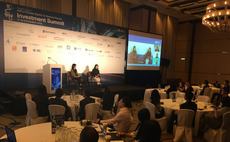
Japan GP outlook: Mixed feelings in the middle ground

Japan’s mid-market is opening up as weak public market valuations facilitate take-private deals, corporations divest non-core assets and aging founders seek an exit. GPs have plenty to aim at, provided they can raise funds
When the founders of Baroque Japan decided to sell up in September 2007 to CLSA Capital Partners, he had been at the helm of the women's fashion chain for just eight years and was in his mid-30s...
Latest News
Asian GPs slow implementation of ESG policies - survey
Asia-based private equity firms are assigning more dedicated resources to environment, social, and governance (ESG) programmes, but policy changes have slowed in the past 12 months, in part due to concerns raised internally and by LPs, according to a...
Singapore fintech start-up LXA gets $10m seed round
New Enterprise Associates (NEA) has led a USD 10m seed round for Singapore’s LXA, a financial technology start-up launched by a former Asia senior executive at The Blackstone Group.
India's InCred announces $60m round, claims unicorn status
Indian non-bank lender InCred Financial Services said it has received INR 5bn (USD 60m) at a valuation of at least USD 1bn from unnamed investors including “a global private equity fund.”
Insight leads $50m round for Australia's Roller
Insight Partners has led a USD 50m round for Australia’s Roller, a venue management software provider specializing in family fun parks.





